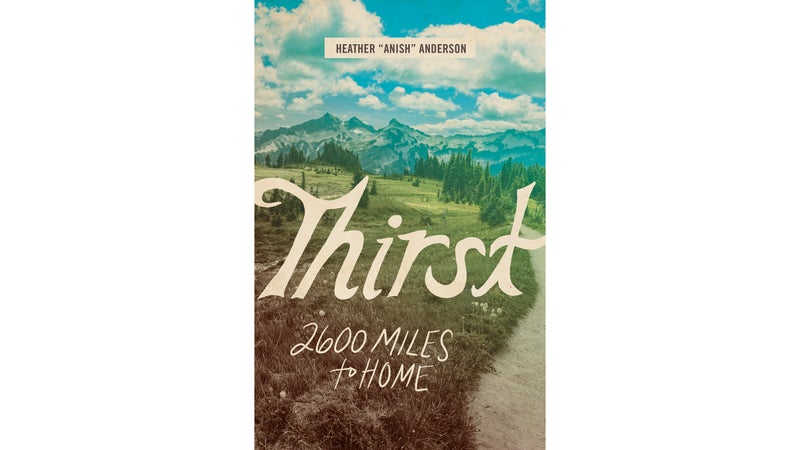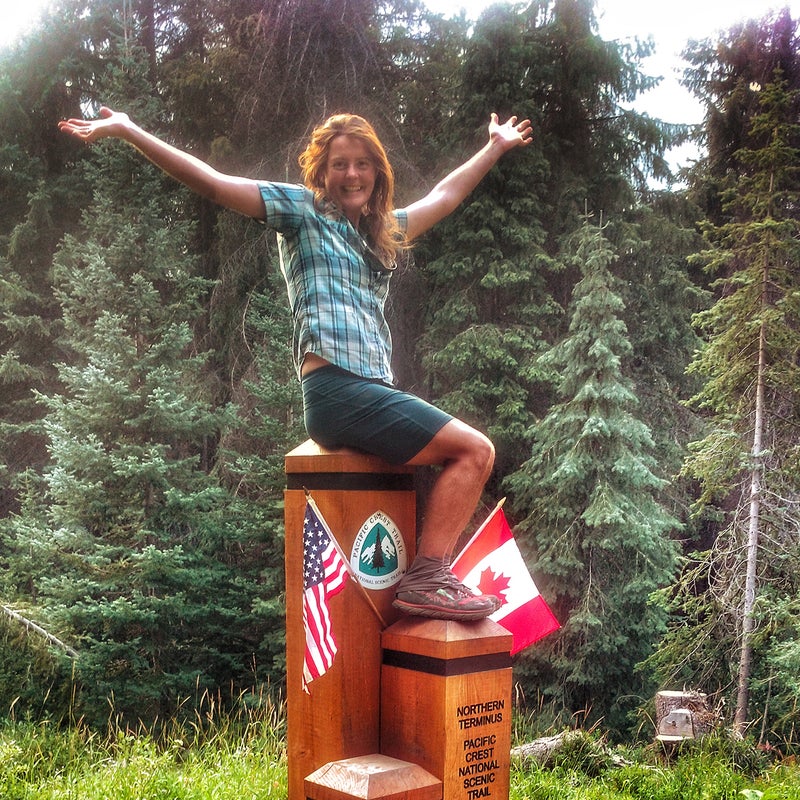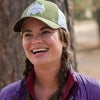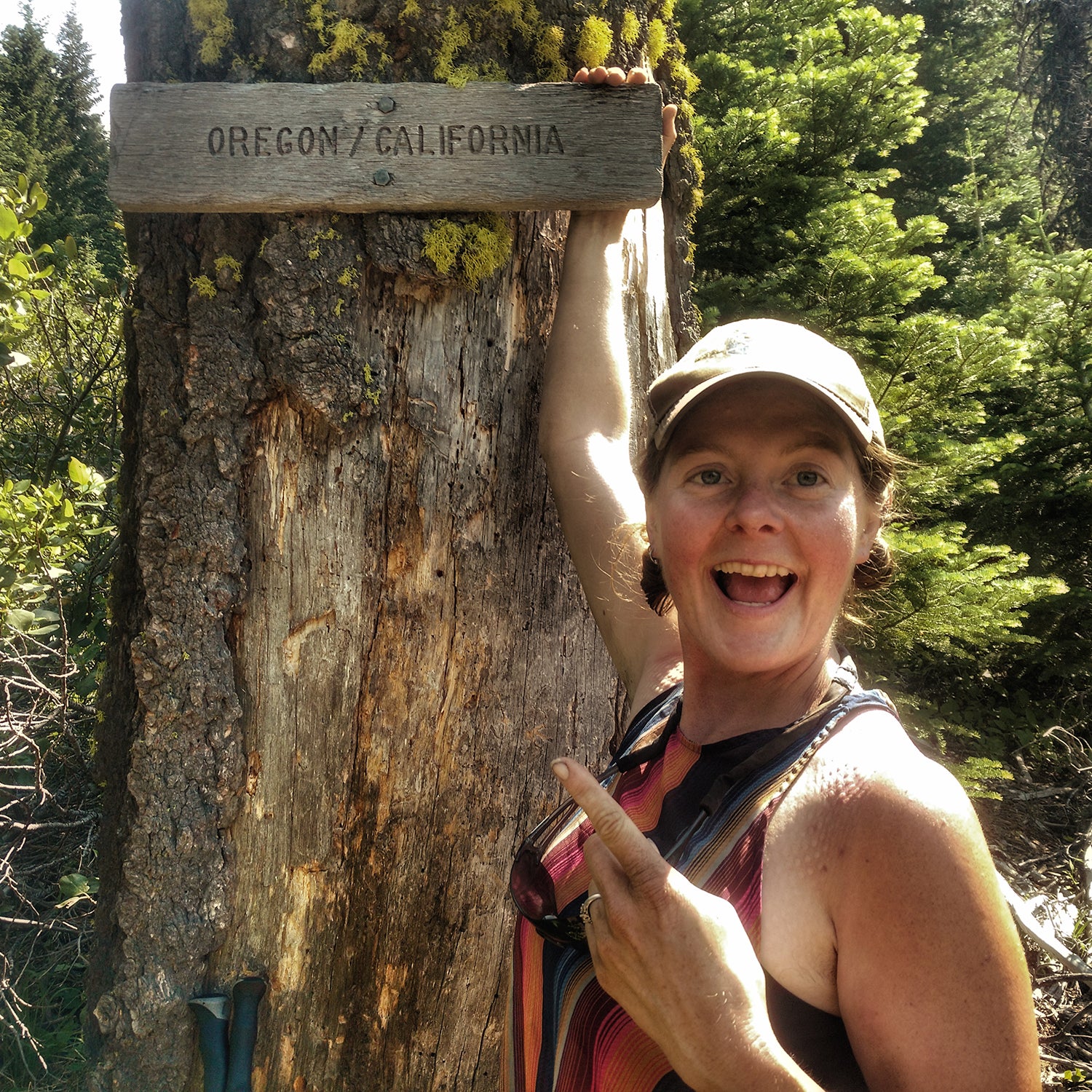Heather Anderson will probably never read this story.
It’s not personal. The 37-year-old hiker, ultrarunner, and writer, known as Anish in the long-distance hiking community, doesn’t read most stories about her achievements. Not even the ones about her impressive fastest-known-time (FKT) records on long trails or her most recent accomplishment, becoming the first woman to hike a calendar-year Triple Crown—that is, knocking out almost 8,000 miles to complete the Appalachian Trail (AT), Pacific Crest Trail (PCT), and Continental Divide Trail within a single year.
It’s simply an act of self-preservation. When an as-yet-unknown Anderson back in 2013, she knocked almost four full days off Scott Williamson’s previous time, making her the fastest person of any gender to complete the trail in that style. The accomplishment drew more attention than she could have imagined. In a flurry of magazine articles and online chatter, the real, live human Heather Anderson suddenly transformed into the stuff of myth, transcending even Anish��to become “The Ghost.” The name, whispered by other hikers on the trail, seemed to render her as something beyond mortal, too fast to see or maybe even believe. And it only added to the postrecord noise as she was simultaneously celebrated as a groundbreaking athlete and criticized for speeding through what many consider to be a once-in-a-lifetime trail with something less than reverence.
Except, well, that last bit is wrong. Anderson tells me that her typical speed on a long hike is about 2.8 miles an hour—pretty darn average. “The thing I always hear is, ‘How can you enjoy it when you’re going that fast?’” she says. “I’m like, ‘Well, when was the last time you drove a car at 2.8 miles per hour and felt like you couldn’t possibly see anything because you were going so fast?’”

It doesn’t really matter what anybody says now, because Anderson, based in Bellingham, Washington, is fully in control of her own narrative with the January release of her new memoir�� ($18, Mountaineers Books). It��draws from exhaustive journal entries written on the trail to track all 60 days, 17 hours, and 12 minutes of her record-setting PCT hike in captivating detail. But perhaps more impressive is the way it paints a complex portrait of the strong-willed��yet vulnerable human being behind what seems like a superhuman feat.
Anderson nearly abandoned the idea of writing Thirst after finishing the trail. Hiking over 40 miles per day had ravaged her body, sure, but it was leaving the trail, a place she calls home, that she struggled with the most. Exhausted from sleepless nights, wracked with feelings of homesickness and grief, Anderson began questioning her accomplishment and even her own inner strength. She considered destroying everything that signified her time on trail—the journal, her photographs, even her matted hair. “It was basically like PTSD,” she says. “If I hiked through an open pine forest and smelled that smell, I suddenly started having anxiety.”
Her friend Barney “Scout” Mann, an author, thru-hiker, and revered PCT trail angel, convinced Anderson to write about her experience. “Initially, when I started working on this book, I was journaling to process all of the emotion,” she says. “It wasn’t necessarily a joyful process, but it is what got me through my post-trail depression.”
“The thing I always hear is, ‘How can you enjoy it when you’re going that fast?’ I’m like, ‘Well, when was the last time you drove a car at 2.8 miles per hour and felt like you couldn’t possibly see anything because you were going so fast?’”
The result of that emotional labor is a refreshingly candid account of how an average person can harness a steadfast determination to achieve the spectacular. Anderson spares no detail in flashbacks to her childhood in Michigan, describing herself as a quiet, overweight everykid who enjoyed retreating to the fantasy world of a well-stocked bookshelf. A charmingly self-aware essay she wrote in her sixth-grade gym class, however, hints at the future: “If I ever manage to overcome my athletic weaknesses, I want to set a record. Not just any record, but an athletic record. One that everyone will know me for. I have a lot of weaknesses, but I have two critical strengths. I am stubborn and I am smart.”
She continues to weave her life story throughout her telling of the FKT attempt. We learn about a transformative summer during college��that Anderson spent working in the Grand Canyon for an organization called . She was inspired not only by the scenery��but also by the way she felt grounded to what she calls her “place in the natural world.” Throughout the summer, Anderson summoned her childhood stubbornness—or more accurately, perseverance—and tested her limits, including a rim-to-rim hike she completed barefoot after her cheap sandals broke.
It was her first taste of truly belonging somewhere, a feeling that only grew once Anderson decided to hike the AT two years later, in 2003, and then the other two Triple Crown trails within the next three years. Anderson explains��that long-distance hiking became a form of meditation to her, a place to both focus and find her truest self. “The sleep deprivation and the extremeness of it really start to wear you down and lower your own defenses against yourself,” she says during our conversation. “We all put up our own walls against our emotions. When you’re busy keeping yourself going on the trail, you don’t have time to fight yourself on that.”
Despite her deep connection to the pursuit, Anderson eventually traded thru-hiking for ultrarunning when she got married and settled into a career. After the marriage dissolved in 2011, however, she decided to return to the PCT—first on a section hike, then to attempt an FKT in 2013. With the latter, Anderson wanted to test her physical and emotional boundaries��and seek healing in a place where she had felt most comfortable and most herself.

The irony, of course, is that Anderson’s FKT attempt was filled with discomfort. There were the long, hard days, which took a��toll on her body as she dealt with hunger, dehydration, and sleep deprivation. But the mental game was, in some ways, much tougher. She wondered if she was using the trail as an escape from reality. She questioned whether she was fit enough to be out there in the first place. And she dealt with fears both real and imagined,��including��things like heights, injuries, mountain lions, and even failure itself, most of which feel silly to her in hindsight, and some of which might seem surprising to those who’ve branded her as bulletproof.
Writing so openly about fears and vulnerabilities might have seemed like “weaknesses” to her sixth-grade self. But that process��required bravery and more than a little sacrifice. “I’m a very private and introverted person, so there’s a pretty high emotional toll that it takes,” says Anderson. “It’s allowed me to become more comfortable with being open.”
While she’s gotten better at setting boundaries around the energy she spends on social media or, say, deciding not to read (or read into) what other people write about her, Anderson recognizes the importance of sharing her personal journey. She hopes that, in doing so, it might help others find their own source of connection to the natural world—and maybe even to themselves.
“The trail is for you, whatever you need it to be, when you need it,” Anderson says. “If you spend time hiking and really immersing yourself in nature, what you’re doing is immersing yourself in yourself. You’re learning about yourself and communicating with yourself. And if you need healing, you’re going to find healing on the trail, because you’re going to find it within yourself.”


